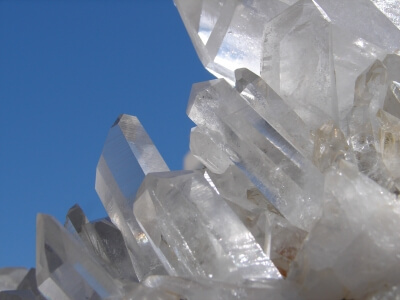 The problem – Occasionally, we get a call from a customer saying that there is “something wrong” with the epoxy he bought from us. One of the constituents of the two part system (usually part “A”, the resin) has become cloudy, milky, has crystals in it, has become lumpy or slushy, or has even become solidified.
The problem – Occasionally, we get a call from a customer saying that there is “something wrong” with the epoxy he bought from us. One of the constituents of the two part system (usually part “A”, the resin) has become cloudy, milky, has crystals in it, has become lumpy or slushy, or has even become solidified.
The solution – In most cases, there is nothing wrong with the material – but some epoxy crystallisation has occurred. You can see the same thing happening in your jar of honey at home. This is a completely reversible phenomenon, and can be fixed quite easily. We recommend heating the affected resin to 60°C until the crystals disappear – it might take a couple of hours. A lower temperature for a longer period is also effective – e.g. 40°C for 6-8 hours. The epoxy should be stirred and the sides and bottom of the container scraped to make sure everything is heated evenly and all the crystals are melted and properly reconstituted back into liquid. Once the epoxy has completely reverted back to its liquid state, then it can be used normally with no adverse effects. It is the same as water turning to ice and then thawing again.

So what happened? – Some epoxy resins are supercooled liquids at room temperature – they remain in a liquid state below their “freezing” temperature, when normally they would turn solid. Solidification doesn’t happen to the epoxy resin unless certain circumstances help it along. Some resin systems are more prone to this happening than others i.e. low viscosity epoxies. Dust or contamination can be a cause, as the small particles can act as a starting point or “seed” for the crystallisation to start – and once started, it tends to continue.
The most common cause of crystallisation is temperature fluctuation; even the difference in warehouse temperature between night and day can start or enhance the crystal growth process. Extreme cold is another initiator. It is sometimes confined to certain production batches. But it is very hard to predict when and how this will happen. The chemists around here would hate to use the word… but it’s random.
Things to remember – If you see cloudiness in the epoxy, this is likely to be small crystals starting to form. Crystallisation will continue, leading to lumps and even complete solidification. It does not mean that the product is faulty. Gentle heating and stirring will reconstitute the epoxy back to original quality, and it can be used as normal. Make sure all of the crystals are gone, as one microscopic crystal remaining will act as the “seed” for the crystallisation process to start all over again. Do not heat up single part epoxies; they might be damaged or cure might be initiated. Keep storage temperature fluctuations to a minimum (10°C to 25°C).
Categories: adhere academy, epoxies, reference
